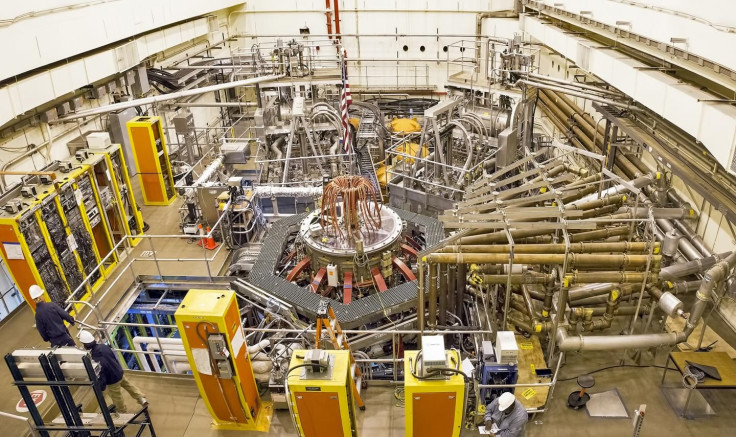Nuclear Fusion: US Physicists Examine The Viability Of Spherical Tokamaks In Producing Clean, Limitless Energy

Nuclear fusion has been powering our sun for the past 4.5 billion years. Unlike fission — the process that powers our current nuclear facilities — fusion generates energy by fusing the nuclei of lighter atoms into heavier ones, and produces no long-term radioactive waste.
Imagine if we manage to replicate and miniaturize the process taking place in the core of stars. This would not only provide us a low-cost, clean and virtually limitless source of energy, it would also end our unsustainable reliance on polluting fossil fuels.
In a recent paper published in the journal Nuclear Fusion, a team of physicists at the U.S. Department of Energy’s Princeton Plasma Physics Laboratory (PPPL), has detailed the design of a viable and efficient fusion device — one that already exists in an experimental form.
The spherical device, known as a “tokamak,” can contain high-energy, superheated plasma produced through nuclear fusion using relatively low and inexpensive magnetic fields. This, the researchers believe, makes it a leading candidate to complement the International Thermonuclear Experimental Reactor — a doughnut-shaped tokamak that 35 nations are building in France to demonstrate the feasibility of fusion power.
The PPPL tokamaks spherical, “cored apple” design also allows tritium — a rare hydrogen isotope — to be created, which can then fuse with deuterium to sustain fusion reactions.
“We are opening up new options for future plants,” lead author Jonathan Menard from the PPPL said in a statement.
Currently, the two most advanced spherical tokamaks in the world are the National Spherical Torus Experiment-Upgrade (NSTX-U) at PPPL, and the Mega Ampere Spherical Tokamak (MAST) at the Culham Centre for Fusion Energy in the U.K.
NSTX-U and MAST “will push the physics frontier, expand our knowledge of high temperature plasmas, and, if successful, lay the scientific foundation for fusion development paths based on more compact designs,” PPPL Director Stewart Prager said in the statement.
However, these “star in a jar” devices still face several significant design challenges, such as containing the turbulence that arises when high-energy plasma is subjected to powerful electromagnetic fields, and controlling how plasma particles interact with the surrounding walls of the tokamak.
© Copyright IBTimes 2025. All rights reserved.





















